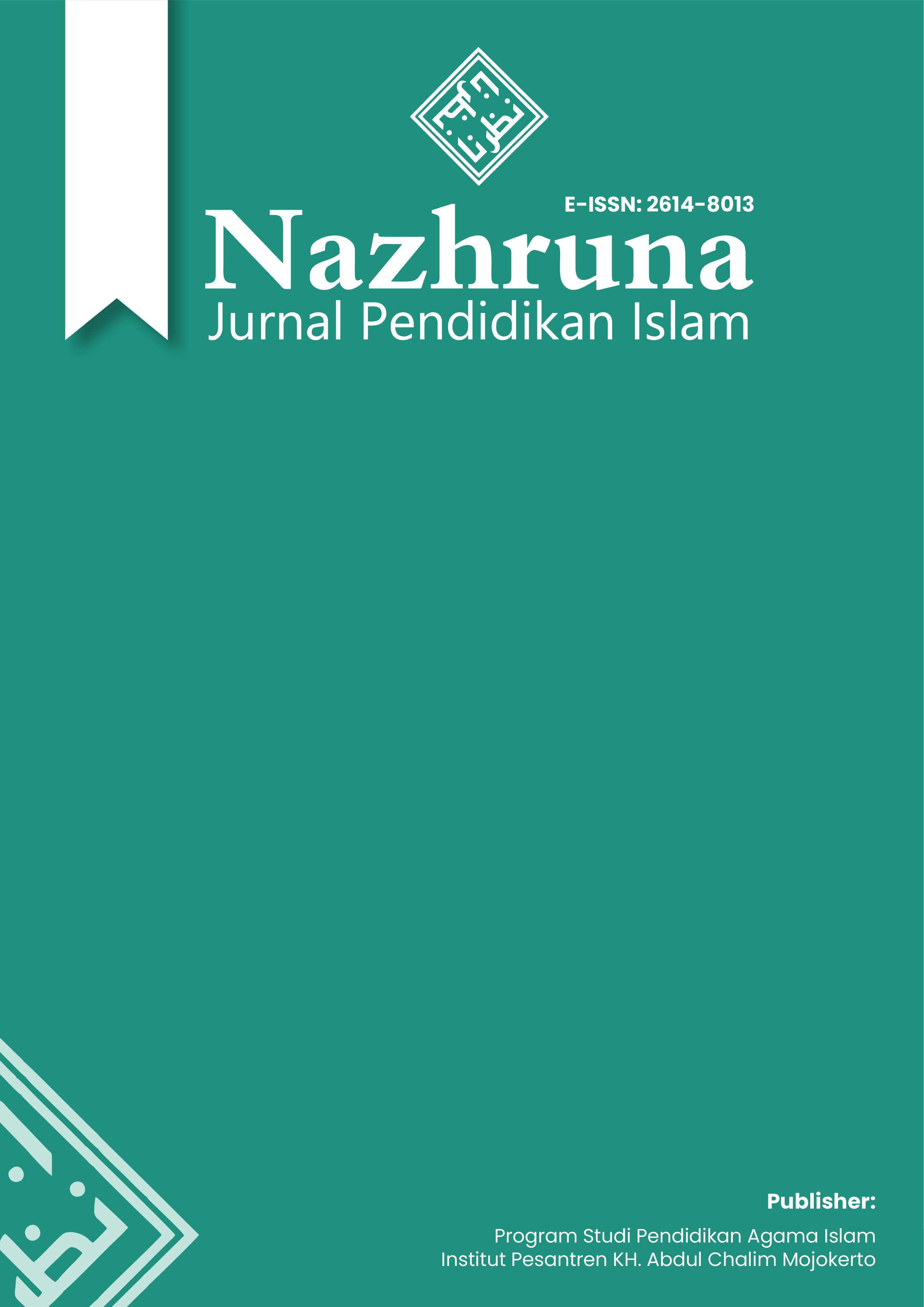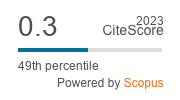English Reading in Indonesian Islamic Boarding Schools: Needs and Materials
DOI:
https://doi.org/10.31538/nzh.v8i1.64Keywords:
English reading materials, Indonesian Islamic boarding school, Stakeholder perceptionsAbstract
Pesantren, Islamic boarding schools in Indonesia, have a unique educational framework. Pesantren combines religious and general subjects, including English. However, existing English reading materials are still questionable in meeting the specific needs of pesantren students. This study explores the differing perceptions of English reading materials among students, teachers, and experts at four Islamic boarding schools (Pesantren) in Indonesia. The study used a quantitative research design involving 10th-grade students from four pesantren: Al-Kautsar Al-Akbar Islamic Boarding School (North Sumatra), Darunnajah Islamic Boarding School (Jakarta), Assaadah Pamulang Islamic Boarding School (South Tangerang), and An-Nahdlah Islamic Boarding School (Depok, West Java). Data collection methods included questionnaires for students, teachers, and experts. A one-way ANOVA found significant variations across five evaluation dimensions: content relevance, comprehension support, exercise quality, instructional clarity, and motivational appeal (F = 31.648, p < 0.05). Based on the data from the Bonferroni post hoc analysis, the most positive rating for English reading materials was shown by students, followed by teachers, and the lowest by experts. Each group has a unique and different perspective. The findings of this study indicate that current reading materials are sufficient to meet basic curriculum standards and student interests. Still, based on expert observations, they do not meet the standards for teaching quality. Teachers need to find a bridge between the realities of classroom practice and pedagogical objectives. Therefore, a collaborative approach is required to develop English reading skills that align with curriculum objectives, classroom implementation, and student involvement in Islamic Boarding Schools. Development of inclusive materials, collaboration on revision communication with the government, ongoing teacher training, and integration of student feedback are highly recommended for developing practical and relevant student reading materials in Islamic boarding schools in the context and culture of the Islamic boarding school itself.
Downloads
References
Agustina, Y., Margana, M., Pancoro Setyo Putro, N. H., & Nazri, M. A. (2023). Designing English Instructions for Islamic Settings: A Need Analysis in Indonesian Pesantren. World Journal of English Language, 13(8), 373. https://doi.org/10.5430/wjel.v13n8p373.
Aken, J. van J. (2010). Donald Schön’s legacy to address the great divide between theory and practice. Planning Theory & Practice, 11(4), 609–613. https://doi.org/10.1080/14649357.2010.525370.
Ali, A. M., & Razali, A. B. (2019). A Review of Studies on Cognitive and Metacognitive Reading Strategies in Teaching Reading Comprehension for ESL/EFL Learners. English Language Teaching, 12(6), 94–111. https://doi.org/10.5539/ELT.V12N6P94.
Aniroh, K. (2019). The Challenges of Teacher-Students in Developing ESP Teaching Materials. The Asian ESP Journal, 15(2), 42-69.
Asfeldt, M., & Stonehouse, P. (2021). On Becoming a Reflective Practitioner. 337–348. https://doi.org/10.1007/978-3-030-75980-3_28.
Azizah, I., & Mardiana, D. (2024). Learning Transformation: Increasing Student Achievement through Discovery Learning. Dirasah International Journal of Islamic Studies, 2(2), 155–166. https://doi.org/10.59373/drs.v2i2.42
Babadi, F., Esfandiari, M., & Cheraghi, M. (2024). Evaluating the dentistry program in Iran using the context, input, process, and product (CIPP) model: a comprehensive analysis. Frontiers in Medicine, 11. https://doi.org/10.3389/fmed.2024.1394395.
Bol, L., Stephenson, P. L., O’Connell, A. A., & Nunnery, J. A. (1998). Influence of Experience, Grade Level, and Subject Area on Teachers’ Assessment Practices. Journal of Educational Research, 91(6), 323–330. https://doi.org/10.1080/00220679809597562.
Cahyo Cahyo, S. D., Muslim, M. R. U., Rahman, A. N., & Pratolo, B. W. (2019). Needs analysis of Islamic-based English reading material for the Muhammadiyah junior high school. International Journal of Evaluation and Research in Education, 8(2), 286–292. https://doi.org/10.11591/IJERE.V8I2.18647.
Carvalho e Silva, A. L. B. de. (2016). A Análise de Necessidades e sua relação com cursos e avaliação de proficiência em inglês para um grupo de pilotos militares brasileiros. 45(2), 490–503. https://doi.org/10.21165/EL.V45I2.585.
Chadwick, B. (2012). Reviewing and Rethinking Reader-Response Theory: Theoretical and Practical Considerations. 5. https://www.questia.com/library/journal/1P3-3101101441/reviewing-and-rethinking-reader-response-theory-theoretical.
Chen, M & Li, J. (2022). Language Immersion in the USA: Characteristics, Challenges, and Recommendations Related to Teacher Education. The International Academic Forum www.iafor.org.
Chen, W. (2024). The Application of Constructivist Learning Theory to English Reading Teaching of Senior High School. Journal of Education and Educational Research, 8(1), 276–279. https://doi.org/10.54097/8ffqna55.
Dhakal, B. R. (2024). Exploring and Addressing Factors Contributing to Reading Proficiency Differences: Teachers’ Perspectives. Journal of Nelta, 29(1), 113–125. https://doi.org/10.3126/nelta.v29i1.72639.
Efrizal, D. (2024). English reading materials with islamic materials and values at islamic boarding schools-based communicative language teaching. Linguistics, 9(1), 62. https://doi.org/10.29300/ling.v9i1.3882.
Efrizal, D. (2022). Developing english reading teaching materials with islamic materials and values for students at islamic boarding schools based on contextual teaching learning. Al-Lughah: Jurnal Bahasa, 11(2), 15. https://doi.org/10.29300/lughah.v11i2.7882.
Egiyantinah, S. H., Alek, A., Fahriany, F., & Wekke, I. S. (2018). The Intervention of Using Reciprocal Teaching Technique and Learning Styles on Students’ Reading Comprehension. Al-Ta lim Journal, 25(3), 216-223.
Elliot, N., Horning, A. S., & Haller, C. (2018). Message in a Bottle: Expert Readers, English Language Arts, and New Directions for Writing Studies. 40. https://files.eric.ed.gov/fulltext/EJ1196564.pdf
Fahriany, F. (2014). Schema Theory in Reading Class. IJEE (Indonesian Journal of English Education), 1(1), 17-28.
Ghafara, S. T., Ambiyar, A., Jalinus, N., & Rizal, F. (2023). Evaluation of the Entrepreneurial Printing School Program at SMKN 1 Tanjung Pinang Using CIPP Models. Jurnal PTI (Jurnal Pendidikan Teknologi Informasi) Fakultas Keguruan Dan Ilmu Pendidikan Universitas Putra Indonesia “YPTK,” 55–61. https://doi.org/10.35134/jpti.v10i1.156.
Hariadi, N., Sumardjoko, B., & Maryadi. (2024). Charismatic Leadership in Improving The Quality of Resources in Islamic Boarding School. Kharisma: Jurnal Administrasi Dan Manajemen Pendidikan, 3(2), 83–96. https://doi.org/10.59373/kharisma.v3i2.42
Holi, I. H. A., & Salih, A. R. A. (2013). Perceived Views of Language Teachers on the Use of Needs Analysis in ESP Materials Writing. English Language Teaching, 6(3), 11–19. https://doi.org/10.5539/ELT.V6N3P11
Holzer, J., Sessig, E., & Lüftenegger, M. (2022). When educator-learner perceptions of instruction diverge: teachers’ perspectives. Educational Research, 65(1), 99–120. https://doi.org/10.1080/00131881.2022.2116348.
Indahsari, L., & Sumirat, S. (2023). Implementasi Teknologi Augmented Reality dalam Pembelajaran Interaktif. Cognoscere: Jurnal Komunikasi Dan Media Pendidikan, 1(1), 7–11. https://doi.org/10.61292/cognoscere.v1i1.20
Indasari, N. L., Fajriyah, L., & Rosyidi, A. (2024). Strategies for improving ESP learners’ language skills. Attadrib: Jurnal Pendidikan Guru Madrasah Ibtidaiyah, 7(1), 41–51. https://doi.org/10.54069/attadrib.v7i1.719
Iobidze, M. (2019). Effective Metacognitive Strategies to Boost English as a Foreign Language Reading Comprehension. 4(2), 116–137. https://doi.org/10.31578/JEBS.V4I2.174.
Irene, E. A. (2023). Evaluation of Teacher Education Curricula and its relevance to licensure examination using Context, Input, Process and Product (CIPP) model. Social Sciences & Humanities Open, 8(1), 100607. https://doi.org/10.1016/j.ssaho.2023.100607
Jiang, M. (2024). Application of Schema Theory in English Reading Comprehension Teaching in Senior High School. Journal of Education and Educational Research, 9(3), 335–336. https://doi.org/10.54097/aadjd008.
Kozan, F. (2024). Öğrenme – öğretme süreci̇nde bsüü modeli̇. Vestnik Bishkek State University Af. K. Karasaev, 2(68), 129–135. https://doi.org/10.35254/bsu/2024.68.22
Maimunah, I., Huda, M., Haque, A., & Zubaidah, Z. (2021). Islamic Boarding School at University: A Strong Pathway for Integrating Religion and Science. J-PAI: Jurnal Pendidikan Agama Islam, 8(1). https://doi.org/10.18860/jpai.v8i1.15361
Munir, S., & Hendra Putra. (2024). Developing an English Textbook for Islamic Boarding School. Journal of English Education and Teaching, 8(2), 373–385. https://doi.org/10.33369/jeet.8.2.373-38.
Nadu, Y., Malik, H., & Miolo, S. T. (2024). Designing Supplementary Reading Material Based on Constructivism Approach for Junior High School. International Journal of Research and Review, 11(3), 505–520. https://doi.org/10.52403/ijrr.20240359.
Nuriman, N., Mahmoud, E., Hamzah, A. B., & Yusnaini, Y. (2024). A Study of Embracing Adolescent Islamic Moral Values at Two Schools in Rural Area. Jurnal Ilmiah Peuradeun, 12(1), 117–136. https://doi.org/10.26811/peuradeun.v12i1.1045
Pravita, A. R., & Kuswandono, P. (2022). Writing Anxiety and Academic Procrastination on Undergraduate Thesis Writing: The Role Of Self-Regulation. JEELS (Journal of English Education and Linguistics Studies), 9(1), 1–25. https://doi.org/10.30762/jeels.v9i1.4010
Pushpanathan, T. (2013). A Need For Needs Analysis. http://hgsitebuilder.com/files/writeable/uploads/hostgator427959/file/ijars270.pd.
Sayı, B. (2024). English Language Teachers’ Perspectives on the Integration of Authentic Materials in Reading Classes. International Journal of Linguistics, Literature and Translation, 7(6), 143–161. https://doi.org/10.32996/ijllt.2024.7.6.16.
Shahnazari, M., & Dabaghi, A. (2014). A Critical Overview of Models of Reading Comprehension with a Focus on Cognitive Aspects. Iranian Journal of Research in English Language Teaching, 2(1), 7–19. https://relp.khuisf.ac.ir/article_533602.html.
Shi, L., Muhammad Umer ,Arshad, & and Shi, Y. (2023). Utilizing AI models to optimize blended teaching effectiveness in college-level English education. Cogent Education, 10(2), 2282804. https://doi.org/10.1080/2331186X.2023.2282804.
Suri, S., & Hariyati, N. (2024). CIPP evaluation model in the educational evaluation: A literature study. JCP (Jurnal Cahaya Pendidikan) Fakultas Keguruan Dan Ilmu Pendidikan, 10(1), 20–30. https://doi.org/10.33373/chypend.v10i1.5950
Suseno, E. L., & Wijaya, H. P. S. (2021). Teacher’s and Students’ Perspectives Regarding the Reading Materials in the Extensive Reading and Writing Class. 9(1), 53–62. https://doi.org/10.9744/KATAKITA.9.1.53-62.
Tomlinson, B., B. Dat, H. Masuhara & R. Rubdy (2001). ELT courses for adults. ELT Journal, 55(1), 80–101.
The Application of Reader-Response Theory in Enhancing Student Teachers’ Affective and Linguistic Growth: A Classroom Action Research in EFL Teacher Education in Indonesia. (2015). The English Teacher, 44(2), 43. https://www.questia.com/library/journal/1P3-3805570261/the-application-of-reader-response-theory-in-enhancing
Yudhiantara, R. A., Kurniawan, E., & Farisi, M. Z. A. (2024). A Metadiscourse Analysis of Research Article Abstracts Across English, Indonesian, and Arabic Authored by Indonesian Islamic Higher Education Scholars. Jurnal Pendidikan Islam, 10(2), 260–279. https://doi.org/10.15575/jpi.v10i2.39165.
Downloads
Published
How to Cite
Issue
Section
License
Copyright (c) 2025 Fahriany Fahriany, Wahyunengsih Wahyunengsih

This work is licensed under a Creative Commons Attribution-ShareAlike 4.0 International License.








